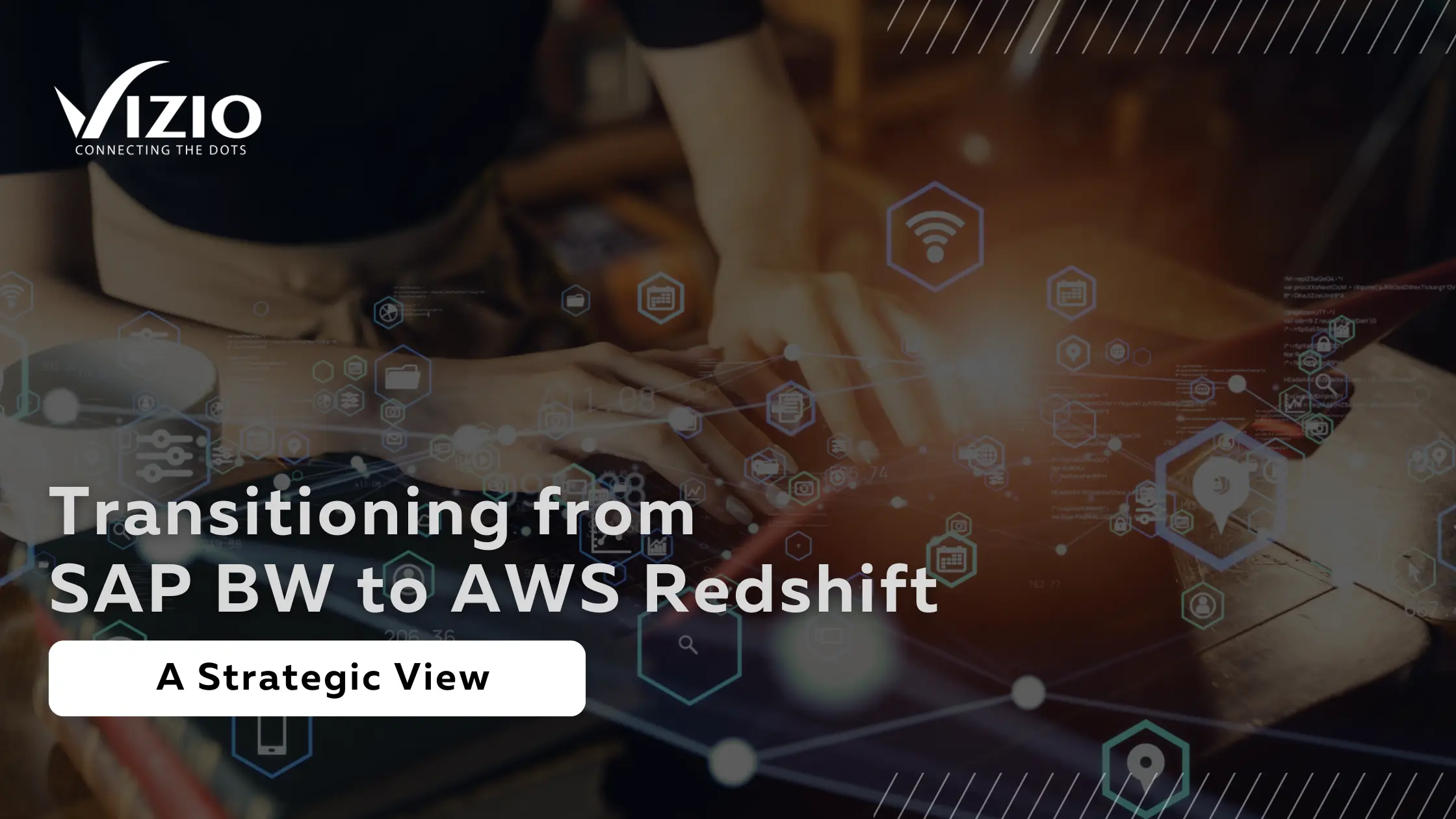As data warehousing technology continues to evolve, companies are always considering options that offer more flexibility and grow with their business needs. While there are many options to choose from, Amazon Redshift presents itself as a top contender in meeting these demands.
AWS offers various services that will be required for this transition but the 2 that will be most critical for us will be the following:
Let’s talk a little about these two services:
AWS Redshift is a fully managed, cloud-based data warehouse service by Amazon Web Services (AWS) designed for large-scale data storage and analysis. It uses columnar storage and massively parallel processing (MPP) to efficiently query and retrieve data across multiple nodes, offering fast performance for petabyte-scale data sets. Redshift is cost-effective, scalable, and integrates seamlessly with other AWS services, supporting SQL for easy data analysis. It offers strong security features, including data encryption and network isolation, making it suitable for businesses looking to analyze big data with minimal administrative overhead.
AWS Glue is a fully managed extract, transform, and load (ETL) service that makes it simple and cost-effective to categorize, clean, enrich, and move data across various data stores. AWS Glue automates most tasks required for data preparation, allowing users to focus more on analyzing data rather than managing infrastructure. It provides a scalable, serverless environment that integrates well with other AWS services, supports data discovery, and enables powerful ETL scripting in Python and Scala. AWS Glue is ideal for simplifying data preparation and loading processes, making it a versatile tool for a wide range of data integration tasks.
Take a Step Back
SAP BW4HANA has been leading the way in the world of data analytics, providing real time statistics within a singular view which in turn has helped organizations boost their operations and make business processes much smoother.
While both BW and Redshift have proven to be solid tools it’s important to understand how cloud-based platforms have evolved to present cloud computing architecture as a worthwhile choice for organizations looking to move away from an on-premise system architecture.
Historically what we have seen as some of the challenges and perks face when comparing Cloud Based vs non-Cloud based solution are:
Redshift being the new kid on the block for data warehousing with its cloud-native architecture is scalable, easy to integrate with multiple data sources and has a user-friendly interface that requires less effort to maintain.
Probably the most attractive feature for Redshift is its pay as you go pricing that helps keep costs in check which for many organizations makes it a good option for the long term and the ideal choice for organizations planning to move or looking for alternatives to SAP BW.
Let’s start first with a very high-level comparison – for all you tech enthusiasts, check out this handy comparison chart breaking down BW and AWS components by functionality:
Hopefully now that you feel more confident about considering AWS as a data warehouse platform we can talk about the do’s and don’ts to keep in mind during the transition process.
Planning Your Migration Journey:
Step 1 – Analyze: What needs to go into AWS Redshift?
Let’s start by looking at what you’ve currently got going on in you SAP BW set up. We’ll need to look at your Data Sources, InfoObjects, InfoProviders, and other bits worth moving forward. Once that’s ready, we can start setting up your new Redshift environment. We can shortlist the right cluster configuration, node types, and the storage requirements based on what’s currently being used and what you’re planning on using in the future.
AWS provides helpful tools like AWS Schema Conversion Tool (AWS SCT) to help in this process.
Step 2 – Execute: Time to Lay Out a Plan
Now that you’ve shortlisted what needs to move, let’s make a game plan to make this happen. To keep it easy, we’ll take a step-by-step approach. Start off by shifting over the low impact tables and apps and work your way up to the more complicated syncing tasks. This exercise will look something like this:
- Clean Up: First things first, let’s clean up your data. Get rid of anything that is no longer being used in your BW environment. This will help keep your Redshift environment moving smoothly.
- Data Extraction Game: There are a few options for getting data out of SAP BW:
- SAP Data Services: A helpful took owned by SAP but comes with an extra licensing fee.
- AWS Data Pipeline: Flexible service for building data pipelines using custom scripts or AWS SDKs to pull data from SAP BW.
- AWS Glue: Serverless data integration service that can crawl SAP BW metadata and generate ETL (Extract, Transform, Load) jobs for data extraction. This handy service does the job without needing servers. It explores your BW set up and sets up the ETL job for moving data.
- HANA Calculation and CDS Views can be consumed directly.
- Third party tools like SNP Glue are also an excellent choice.
Step 3 – Conversion: It’s Morphin’ Time
It’s time to set up your brand new, shiny Redshift schema. With a little help from SNP Glue, pulling data from SAP becomes a walk in the park. Once we’ve migrated over the basics like tables and data types, we can fine-tune the Redshift schema to make sure everything runs like a well-oiled machine in its new home.
Step 4 – Data Migration: Time for a Fresh Start
The shifting of data can be dividing into a two part plan:
- Use AWS Data Migration Service (DMS) or directly upload your data to Amazon S3. This helps make sure that your data stays safe during the transfer.
- Once your data is in S3, you can load it directly into Redshift using the COPY command, which is the standard process for moving big batches of data.
Step 5 – Evaluation: Check & Fine Tune
Awesome job getting everything moved over to your new platform! Let’s now double-check to make sure all your data made the journey intact. We’ll do some quick checks between SAP BW and Redshift to make sure everything’s in order. Once we’re sure everything’s good, we’ll test out Redshift’s performance to make sure it’s hitting those high marks you’re used to from SAP BW. Oh, and don’t forget to make sure the right people have access to the new setup and tighten up those security settings!
Step 6 – Final Phase: Go – Live Time!
After completing all essential data transfers and validations, and making sure your team’s learned all about Redshift to be able to support the new environment, it’s time to launch your new Redshift data warehouse platform.
Step 7 – Did You Think it Was Over? : Getting Ready for What’s to Come:
We can’t end this conversation without talking about how AI can help to extend your data warehouse ecosystem. By creating personalised cues in Redshift, we can take advantage of AWS Bedrock’s generative AI capabilities to provide replies for our customized queries on our data sets. This means you have the ability to get more specific and targeted results as compared to more generic prompts. What could be better than that?
If you are thinking about incorporating Gen AI into your data warehouse, here are some cool uses:
It’s a Wrap
It’s important to remember that swapping from SAP BW to Redshift isn’t just a tech switcheroo – it’s a big strategic move that needs careful planning and teamwork across the board to make sure you’re getting all the awesome perks and value out of it.
Useful Tools for a Seamless Migration:
AWS provides a wide range of resources that assist in a seamless migration process:
- AWS for SAP Solutions: A comprehensive guide that provides guidance on best practices for migrating SAP workloads (include data warehousing) to AWS. More information can be found on https://aws.amazon.com/sap/.
- AWS Schema Conversion Tool: A tool for converting existing SAP BW schemas to a format that is compatible with Redshift.
- AWS Service Catalog: Use prebuilt templates and workflows to automate tasks in the migration process.
At VIZIO, we’re uniquely positioned in a way that allows us to see both ends of the spectrum. Having been in the SAP reporting and analytics game for a while now, we’ve had the opportunity to learn more about the services offered on other platforms like AWS. Contact us today to talk about how we can help you nail down the right strategy for your data warehousing needs.

